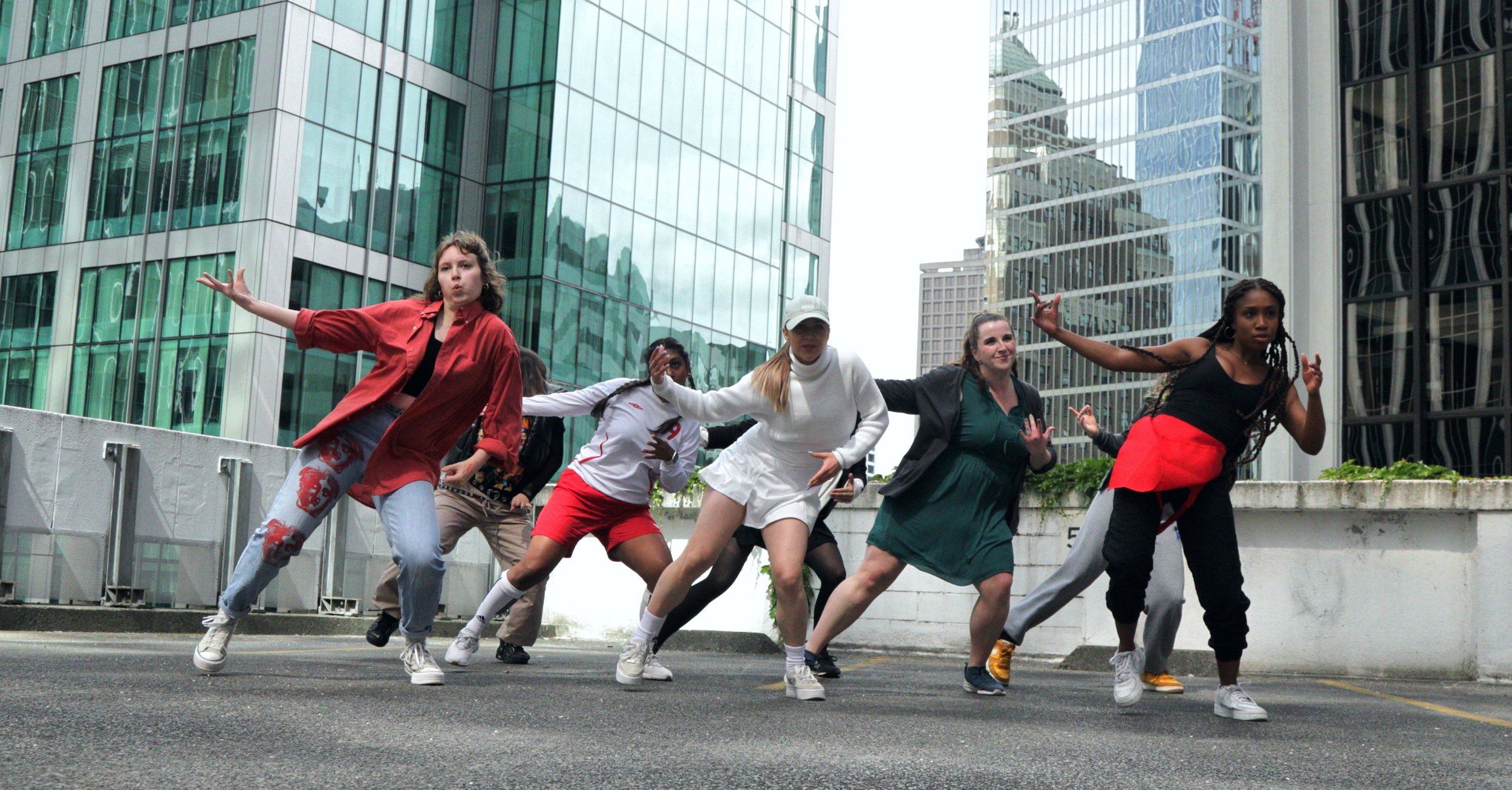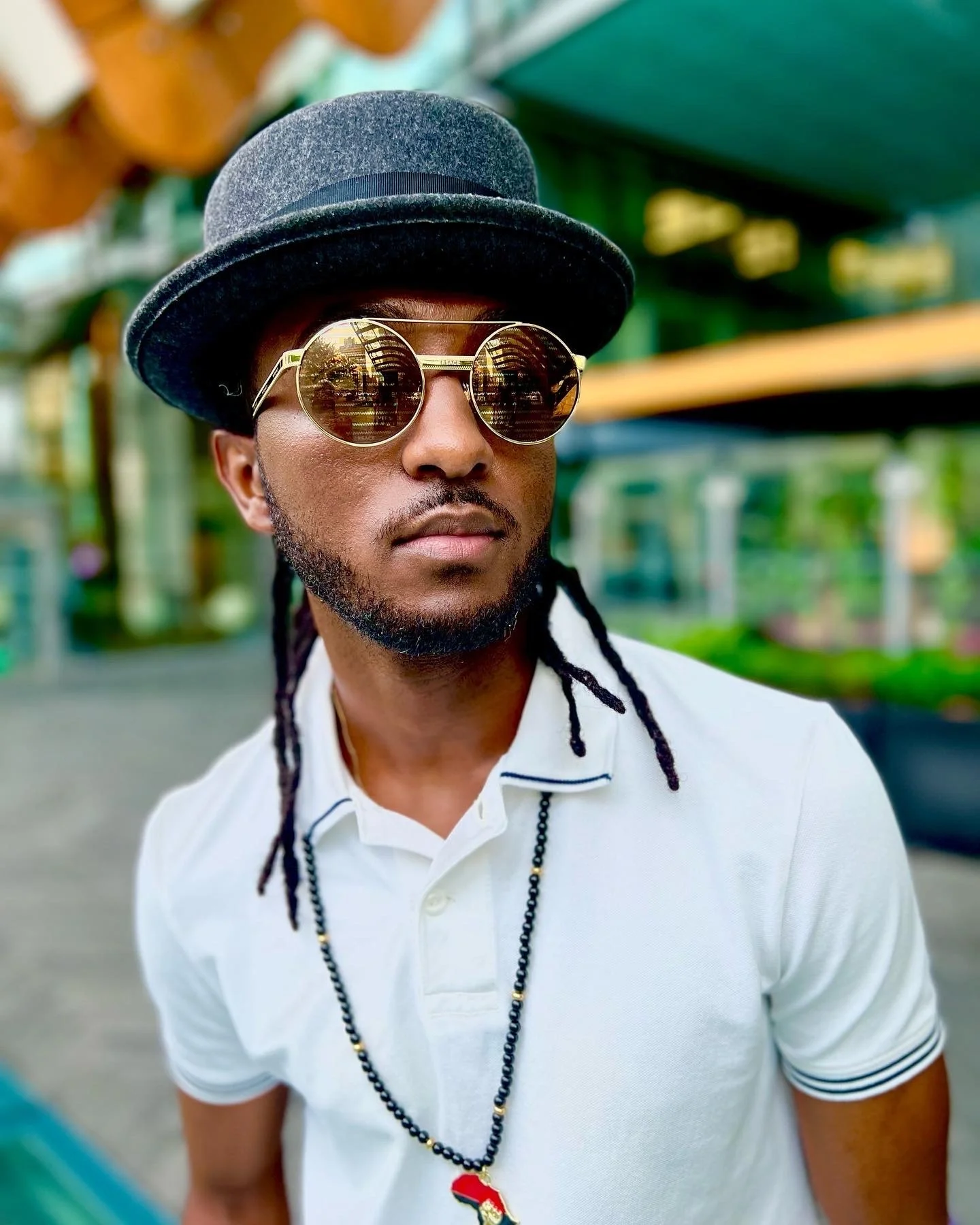Isaac Gasangwa fuses traditional Rwandese dance and modern street style in The African Dream
The 10-dancer piece shares Gasangwa’s story of living in the aftermath of Rwanda’s 1994 genocide
The African Dream. Photo by Isaac Gasangwa
The Dance Centre presents The African Dream on September 16 at 8 pm, as part of the Scotiabank Dance Centre Open House
ISAAC GASANGWA, a.k.a. Izo Dreamchaser, was born in Rwanda in 1992—two years before the genocide against the Tutsi ethnic group wreaked havoc on the country, leaving over one million people dead.
In the wake of that tragedy, Gasangwa grew up. He lived in Rwanda’s capital city, Kigali, now an urban sprawl of brightly lit homes and high-rise buildings framed by lush rolling hills and valleys. But Rwanda is a small, landlocked country, and the genocide left behind widespread destruction and a ravaged economy. With limited resources available, Gasangwa says that rebuilding after the tragedy was a slow process.
“I was a baby; I didn’t really realize what was happening,” he says. “It’s the aftermath that I would say impacted my life and the people around me, because I lost all family members. From my dad’s side, everyone died except him. From my mom’s side, not a lot of them died, because they had already left when it started to happen—they lived in the city.”
When he was small, recalls Gasangwa, he used to cry a lot. His family would try everything to soothe him—but it wasn’t until his mom started singing him a little beat, a kind of, “tu, ta, tu-tu-tu-ta”, that he would cheer up, offering cute little dance moves to her tune. His mom nicknamed him “Tuta”.
“Dance is in everything we do,” Gasangwa says. “Dance is our way of living. It’s like asking, ‘When did you start eating?’, you know?”
Gasangwa moved to Vancouver in 2014, where he founded his company Afrobeats Van after noticing that the city lacked a viable forum for learning African dance. His latest 10-dancer ensemble work, The African Dream, premiering at The Dance Centre’s daylong Open House on September 16, is a multidisciplinary piece that sheds light on the genocide’s impact, while also revelling in hope for the future.
The piece has been a long time in the making. Back in Rwanda, Gasangwa first started investing time and money into professional dancing after he graduated from high school. He would train for hours online, mainly using YouTube to learn about the different styles and studios that exist around the world.
Eventually, he opened the first dance studio in Rwanda; and then the first dance festival; and then he founded a competitive dance group, Jabba Junior, which went on to compete around Africa, winning major trophies and putting Rwandese dance on the map.
Isaac Gasangwa. Photo by Afrobeats Van
After a few years, Gasangwa realized that in order to continue learning and growing, he needed to move to a new place. Hoping to get to L.A. in the long run, he came to Vancouver—but decided to stay when he saw the opportunity to build community for Black dancers.
“The African Dream is inspired by the story that I used to hear when I was back home—the ‘American dream’,” explains Gasangwa. “What is the American dream? You grow up, you go to school, you study, you get a degree, you find a good job. You live a happy life after, right? That’s the American dream.
“So now what is the African dream? The African dream is a dream of prosperity, and a dream of survival. Creating opportunities; opening doors for your other Black or African friends, you know, because there are no opportunities for us. So if you get a chance to get into the door, what do you do with that?”
The African Dream is divided into two halves. The first is a traditional exploration of the Rwandese dance Gasangwa grew up with—each movement serving a purpose. “If I’m in Rwanda, when I’m dancing, I dance because I’m happy,” explains the artist. “It’s because I’m sad. It’s a funeral, or I’m praying.”
These dances exist in a very personal realm, he says, and they touch upon sensitive subjects. Projections and spoken words will guide the piece along, educating the audience on the meaningful cultural movements. There’s no music in the first half; the dancers use their own bodies and mouths to create a traditional soundtrack.
The second half of the piece boasts modern street-style fun; it’s a jubilant celebration of Black resilience backed by more Western-inspired musical beats. Gasangwa incorporates the creative imagery and cool, intricate hip hop choreography he teaches at Afrobeats Van—plus, there are hints of martial arts. Above all, he says it’s entertaining to watch.
“Everything I do, I want to do something very different,” says Gasangwa. “You enter the show, and you feel like, ‘Wow, I’ve never seen this before. This is different. I’ve been to hundreds and thousands of shows, but this one is different. It’s unique.’”















